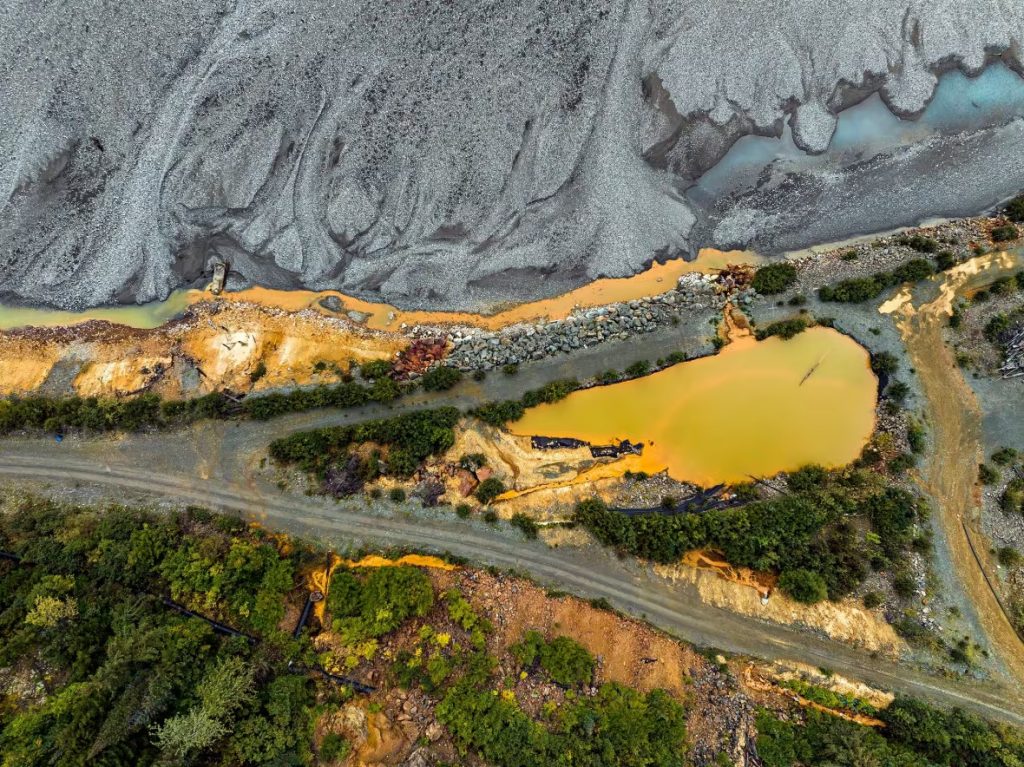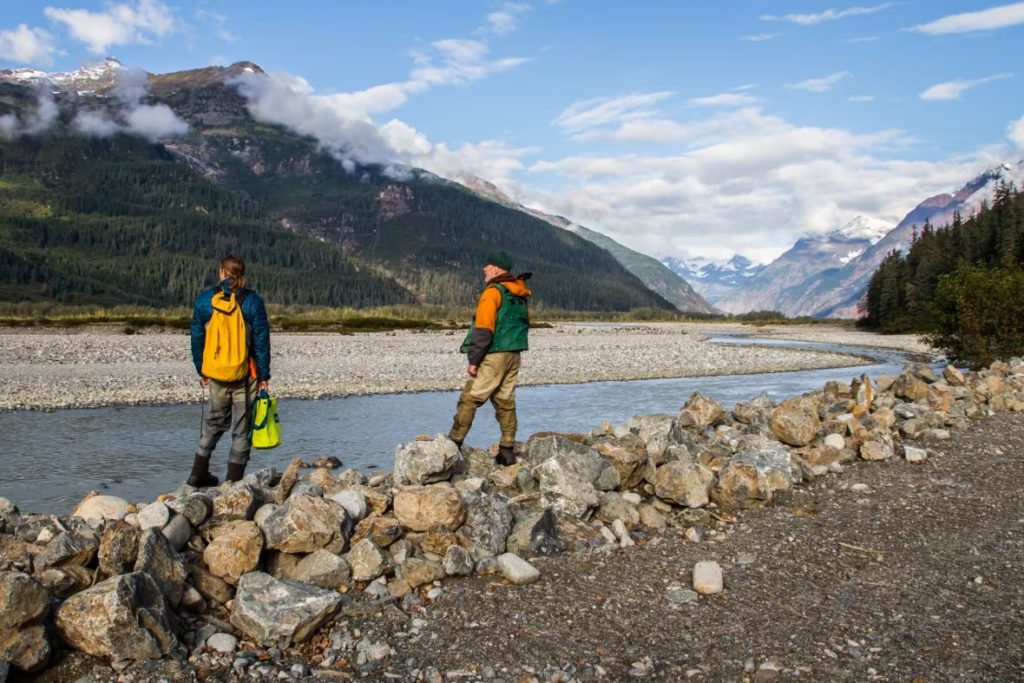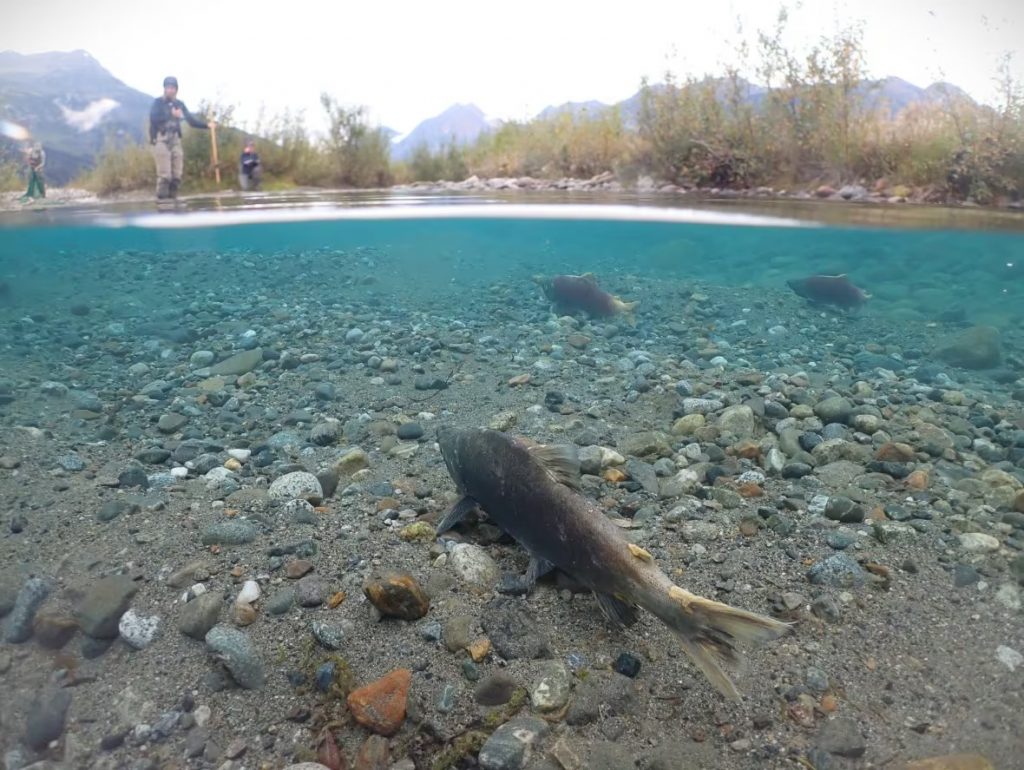Salmon competing with industry as glaciers melt says study — exposing new habitat

The melt creates potential salmon habitat while attracting attention from mining companies.
A new paper published in Science says that as glacier ice melts, new land and rivers are being revealed in the ice-covered transboundary region shared by northern B.C., Alaska, and the Yukon.
The peer-reviewed paper was a collaboration among researchers from Simon Fraser University, the Gitanyow Hereditary Chiefs’ Office, the University of Montana Flathead Lake Biological Station, and Taku River Tlingit First Nation.
Researchers say that for Pacific salmon, these emerging territories may present an opportunity to offset extensive habitat loss.
Tara Marsden acts as Wilp Sustainability Director for the Gitanyow Hereditary Chiefs, and is co-author of the study.
For her, the emerging research is bittersweet. On one hand, the glaciers melting is clear and disturbing evidence of climate change, and on the other, these findings may indicate a ray of hope for salmon.
“Salmon have survived for millions of years and overcome huge obstacles,” she said.
Now, they’re adapting to our human-created climate change and we’re trying to do as much as we can to ensure they’re successful. – Tara Marsden, Wilp Sustainability Director for the Gitanyow Hereditary Chiefs
But the same area is already attracting interest from mining companies.

Glacial ice currently covers areas within the Canadian “Golden Triangle” – so named for containing some of the richest gold ore bodies in the world.
In Greenland, some mining companies with claims staked on ice-covered areas have removed glacier ice with machinery or explosives in their eagerness to access the mineral deposits beneath.
It’s a strategy lead author Jonathan Moore notes could very well be employed in Canada. Moore, a professor of aquatic ecology and conservation at Simon Fraser University, has studied glacier retreat and salmon for years. But this will be his first paper that takes a direct look at the intersection between mining, climate change and aquatic ecosystems.
The paper combines spatial data on glacial retreat with logged mining claims and future mining potential.
They found that more than half of the promising future salmon habitat has mining claims staked nearby. More potential habitat has medium or high mining potential, which study authors see as an indicator of future potential mining pressure.
Call for policymakers to consider ecology, First Nations rights in future legislation
The paper includes a number of recommendations to fill what it describes as “critical policy gaps” regarding mining claims.
The duty to consult Indigenous stakeholders has been part of Canadian constitutional law since 1982.
But free-entry claim rights, which allows miners to enter, access land and begin the process of registering a claim to the area, does not currently require consultation in B.C. and in many parts of the Yukon.
In September, the B.C. Supreme Court ordered the province to update its Mineral Tenure Act to include consultation with Indigenous stakeholders within the next year and a half.
In Yukon, the government committed to updating its mining legislation in 2021, but still was not able to provide a timeline for delivery as of November 2023.
“These changes can’t come soon enough,” said Marsden. “The Mineral Tenure Act not only violates Indigenous rights but also undermines stewardship of ecosystems for future generations.”
In the meantime, many of these areas are open for business.
Environmental law generally focuses on the present value of land rather than its future. But Moore said that needs to change.
“Climate change is transforming ecosystems around the world,” says Moore.
This paper reveals the need to look carefully at environmental laws and make sure that they not only protect habitats of today but also the habitats of tomorrow. -Jonathan Moore, lead author of the study

This kind of advocacy in a scientific paper is unusual. Dan Shugar is an associate professor of earth, energy and environment at the University of Calgary, who has studied glacier retreat.
He was not involved in the study, and said the policy information contained in the paper makes it unique.
“As scientists, we all-too-often think that the science speaks for itself,” he said.
We ignore the very difficult challenges faced by politicians and decision-makers who need to balance a variety of competing priorities and vantage points.- Dan Shugar, associate professor of earth, energy and environment, University of Calgary
Moore outlines a number of targeted protections in regions that are relatively unexplored for mineral potential.

The vast majority of mining in the area would target gold. The study notes that just 8 per cent of global gold is used for technology, with the majority becoming jewelry.
Marsden isn’t against mining in the area full stop, but said any development would have to be done carefully and in partnership with First Nations to minimize potential impacts.
Given the importance of salmon to many communities and the significant decline being recorded, Marsden believes protecting the new habitat should be seen as a priority.
“We could be seeing extinction within my kids or grandkids’ lifetimes, which is very sad.”
Related stories from around the North :
Canada : Salmon are dying in dried-up river beds in northern Yukon, CBC News
Norway : Alarm bells ringing for Atlantic salmon in northern Norway, The Independent Barents Observer
United States : New research suggest some salmon species expanding their range in the Arctic, Eye on the Arctic



